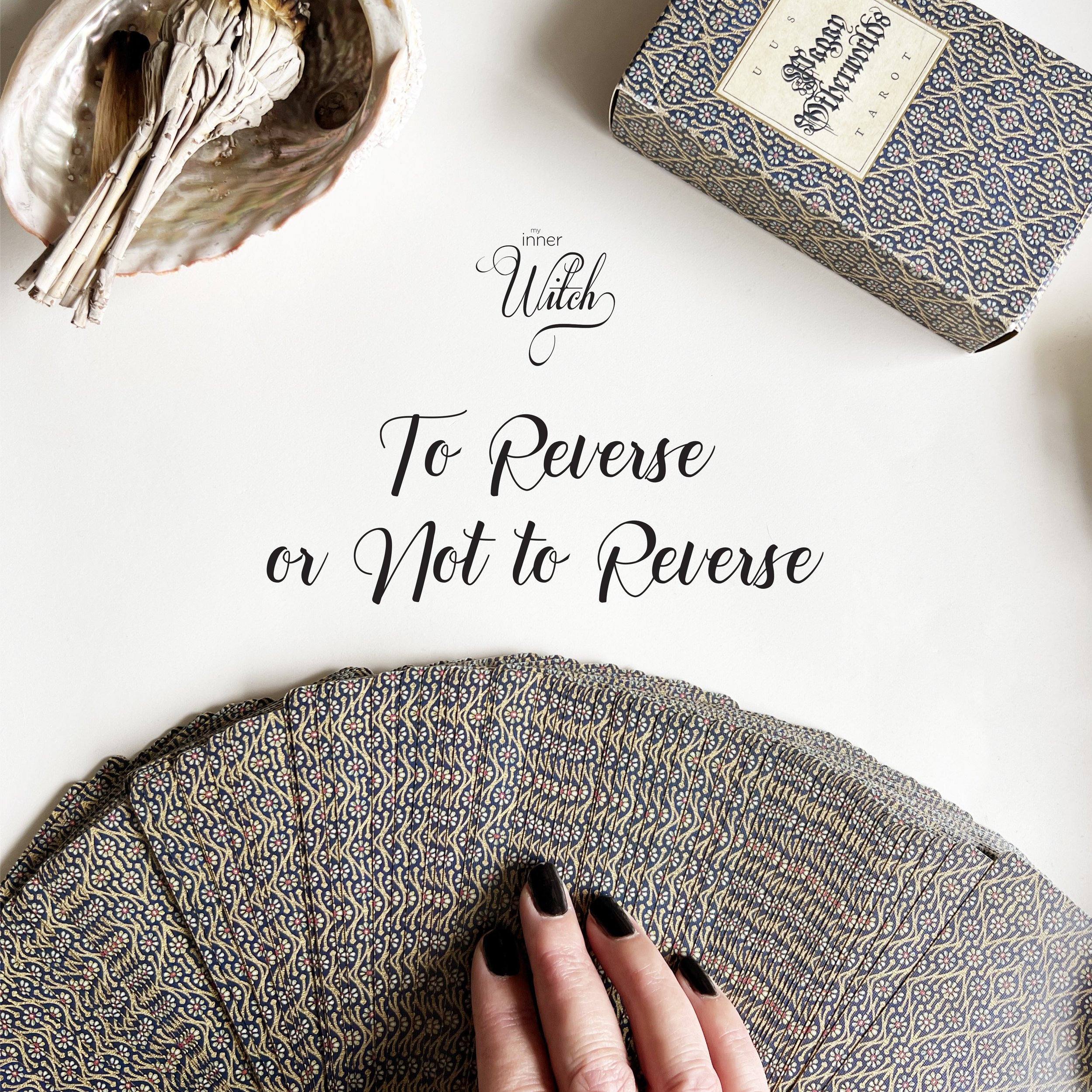To Reverse or not to reverse
Tips and Techniques for Reading Reversals
Some people love reading with reversals, and say they add another level to their readings. Others never read with reversals and some people occasionally read with reversals.
A reversed card is a card that has presented in the reading in a reversed position, or upside down. Some people when they shuffle will cut the deck and turn sections of the cards upside down as they shuffle to ensure they get reversals in the card layout.
I don't often read with reversals, and I always check my cards are all the right way up before shuffling, I never force reversed cards to appear. But occasionally a card will appear reversed, maybe from being a jumper card and me putting that back into the deck the wrong way around, or it will flip while I am shuffling. In that case I will take special notice of that card that has jumped or flipped and has presented in the reverse.
There are three basic ways to approach reversed cards:
• they can be read as a block or delay to the upright meaning of the card
• they can be interpreted as the opposite meaning to the upright meaning
• they can be read in an open reading style drawing interpretation from the artwork and how the upright meaning of the card has changed with the reversed image, things fall out of cups, swords fall out of bodies, coins fall out of hands, for example.
What is certain is that not every reader will read reversals the same, so developing your own technique and sticking to it will enhance the language and relationship you develop with your cards.
Every card has a positive aspect and a challenging aspect. Every card has a positive and negative, every card will show an opportunity and a challenge. When a card is reversed or showing a challenging or blocked position, one technique is to go back to the previous card in the deck sequence and look at the lesson or message of that card. Use the structure of the deck to help find the solution.
For example, if you have a minor card, and say you have a 10 in reverse, go back to the 9 in the same suit for insight. What is the lesson and message of the card prior to the reversal in the sequence of the full deck that was not acted upon and resulted in the blocked energy of the card in reverse.
If you have a major arcana card, go back to the previous major arcana card in the sequence, for example a Tower reversed requires you to look at the Devil. How might the message of the previous major arcana give insight into dealing with the block or delay in the experience of the reversed major arcana card.
A court card will go back to the previous court card in the sequence, for example if you have a Queen reversed you want to go back to the message of the Knight in the same suit for the solution to getting the reversed card flowing in the upright position again.
Whether you choose to read with reversals or not, is entirely your decision. They do offer a clear way to see where energy is not flowing as easily as it should within the reading.
Another way to determine whether a card is to be read in its most positive or challenging aspect is to look to the surrounding cards and whether the card is happy and thriving with them or looks to be in conflict. I personally prefer to use Elemental Dignities than reversals, which uses the element of the cards to determine whether they are strengthened or weakened by surrounding cards.
Bec Birrell is a professional member of the Tarot Guild of Australia, professional reader and creator at My Inner Witch


